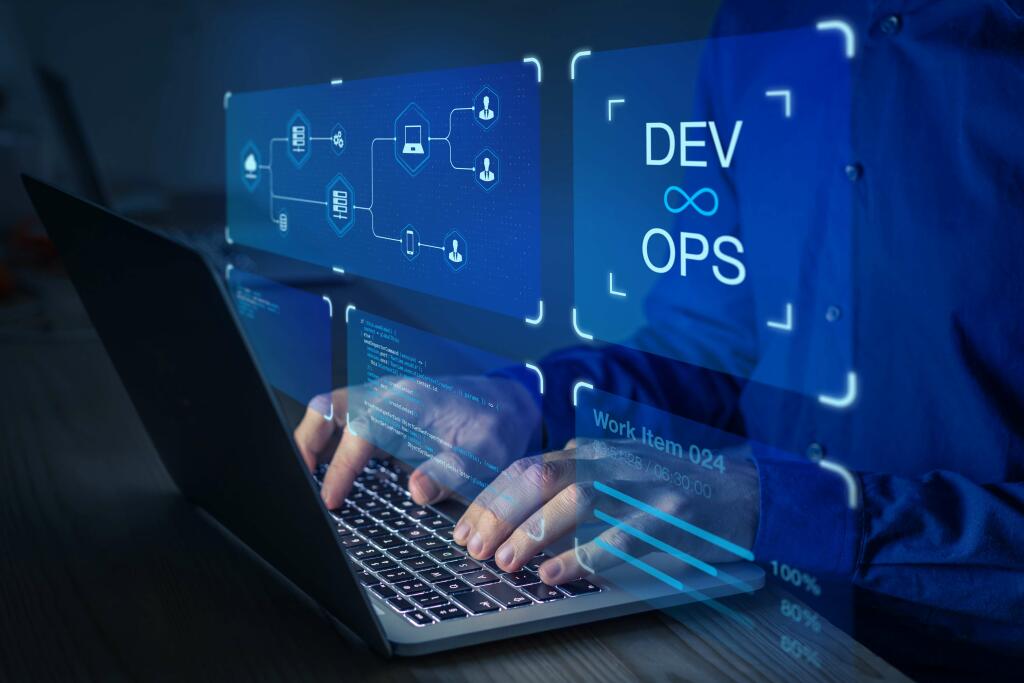Content
- Data Scientist Resume Guide: The Ultimate Recipe for a Winning Resume
- Join 1,000’s of Blockchain Professionals Who Subscribe to Our Newsletter
- The Benefits Of Blockchain For Data Science
- The Radical Changes AI Is Bringing To The Insurance Industry
- googletag.display(‘Articlepage_Inread_2’);
- How to create DAO on blockchain?
The information is cross-checked and analyzed at the entry point before being added to different blocks. The data generated from data science can be secured with blockchain technology with the help of its network architecture. Michael G. Solomon, PhD, is a professor at the University of the Cumberlands who specializes in courses on blockchain and distributed computing systems as well as computer security. He holds numerous security and project management certifications and has written several books on security and project management, including Ethereum For Dummies.
Data scientists use predictive analysis to accurately forecast social events, including consumer preferences, customer lifetime value, dynamic prices, and organizational churn rates. As a result, almost any occurrence can be predicted with the correct data analysis, whether it’s social attitudes or investment signals. Blockchain is a decentralized system of records that can’t be altered or hacked. It can be used to store data in an immutable way and make it easier to trace, ensuring the integrity of the data. The Blockchain has the potential to transform data storage, so it’s important to understand the implications of this technology. After all, Blockchain technology is all about creating a secure, decentralized system for managing data, and Data Science is all about analyzing and understanding data.
Data Scientist Resume Guide: The Ultimate Recipe for a Winning Resume
Combining blockchain and big data can help to advance the way data analytics is shared and monetized. Data is the new oil and the more data you have, the more valuable it becomes. Blockchain data, just like other types of data, can be analyzed to reveal valuable insights into behaviors, and trends and as such can be used to predict future trends. It can be applied to topics such as supply chains, property management, and online advertising.
When it comes to money, trust in transactions has always been a wobbly affair. The users found a huge gap as there was no trustworthy and reliable system in place to authenticate the virtual currency transactions. These data analysis techniques are necessary for ensuring successful regulations, error minimization, and the overall well-being of the system.
Requests to introduce BTech programmes in cutting-edge fields like artificial intelligence, blockchain technology, robotics, data sciences and cyber security, rejected by HC @examupdthttps://t.co/78fd0bGiwL
— TNIE Telangana (@XpressHyderabad) December 21, 2022
On the internet, you can find practically anything that man can imagine, including money, homes, music, data, real estate, social media content, shopping, transactions, etc. In order to start or enable the transition, organizations must reevaluate their organizational structures and operating paradigms. Software developers are an important part of building blockchain technology and plenty of companies hire developers with specific blockchain skills. The jobs are usually listed as Blockchain Developer or Blockchain Engineer.
Data science is a field that is always changing and will do so in the future. Similar to this, Blockchain can assist data scientists in accomplishing milestones that were previously thought to be unattainable because of its strong security and open record-keeping. Data Science is a concept that uses a combination of different tools, algorithms, and ML algorithms to glean hidden patterns from unstructured data. Businesses and organizations can use technology to better anticipate the future by identifying hidden data patterns in unstructured data. Data science seeks to enhance data quality and aids in delivering desired services and goods based on consumer trends and preferences.
Join 1,000’s of Blockchain Professionals Who Subscribe to Our Newsletter
Big data is improved by blockchain data because it guarantees data integrity. As data has become more widely available and robust, the majority of firms are now moving towards deeper, advanced analytics. We’ve listed some of the ways blockchain technology helps preserve data integrity throughout the data lifecycle. SyncFab – This company accommodates industries that require special equipment and parts with long supply chains and rigorous standards. This includes military contractors, medical equipment providers, and aerospace companies. These industries have complicated processes to ensure these products are not faulty and SyncFab uses blockchain to help manage and secure supply chains.

True, this data will reach the other division, but it could take a long time, and there’s a chance they’ll get lost in the process. These courses can help aspirants by providing them with the necessary skills and knowledge to pursue a career in these industries. The courses can provide them with an understanding of the concepts and technologies involved in these fields and how to apply them in real-world scenarios. However, the choice to choose between the two will largely depend on one’s interests and skill sets.
The Benefits Of Blockchain For Data Science
The blockchain provides an immutable record of transactions between two parties without the need for a central authority to verify the transaction. This means that once something has been recorded in the blockchain, it cannot be altered or erased. This type of information is stored in blocks and each block has a timestamp, which makes the data tamper-proof. The blockchain prevents data from being edited or erased so it can be used for future analysis and research.
- When employing Blockchain technology, the issue of trust is no longer a barrier to information sharing.
- In this article, I describe a few challenges that data scientists usually face and the potential of blockchain to alleviate these challenges.
- They have had to spend large amounts of money on fraud detection and prevention systems that often fail to keep up with the latest methods of fraud and cybercrime.
- There are many decisions and issues that face the technical team and data leadership, and this class will enable participants to effectively make those decisions both offensively and defensively.
- When it comes to money, trust in transactions has always been a wobbly affair.
The majority of the jobs that involve blockchain and data are finance-related. These titles include business analyst, blockchain & finance analyst, data analyst, blockchain security analyst, and crypto operations analyst. Job titles are highly variable from firm to firm and it’s best to look at the description to figure out what the role is.
The Radical Changes AI Is Bringing To The Insurance Industry
In this way, blockchain analytics allows companies and businesses to improvise as they move towards a highly connected future, saving vast amounts of resources and time. Starting with the core components of Blockchain, we will detail the state of art in Blockchain data analytics for graph, security, finance, and management domains. Beyond the cryptocurrency aspects of Blockchain, we will outline the frontier research approaches for data analyses from Blockchain platforms, such as Ethereum, Waves and Omni. Furthermore, we will discuss how the adoption of Blockchain will impact the future of data analytics and of human society, in general.

There have been numerous data science course programs to cater to interested individuals who are enthused by the prospects of data science as a career. Similarly, blockchain technology, although relatively new, has surfaced, gaining attention from academic and training institutions, given its massive significance in today’s technological era. As explained above, blockchain data is stored in both private and public nodes. Before adding the data to other blocks, the data is examined and cross-checked at the entry point itself. As these technologies grow, the complexity and amounts of data stored too are proportionately increasing. Analyzing this data has revolutionized the two technologies by tapping their potential by bringing them together – there comes blockchain analytics.
googletag.display(‘Articlepage_Inread_2’);
According to reports from platforms for independent contractors like UpWork, blockchain expertise continues to be in high demand. Similarly, experts in other fields like legal studies are said to have a significant advantage if they are skilled with blockchain technology or have a basic understanding of it. Data also plays a critical role in addressing several critical pain points in the industry.
This level of functionality in data management and analysis is not possible with traditional databases. That’s mainly because only a very limited number of people can get access to centralized servers. To understand what blockchain analytics is, we first need to know how a blockchain works. Unfortunately, our traditional data management practices keep us from using this data to its full potential. Currently, almost all of the world’s data is stored on centralized hard disks. This leads to several scalability issues and makes it impossible for everyone to access it.
In its subdomains, such as Predictive Analytics, Diagnostic Analytics, and Descriptive Analytics, the discipline sees a lot of developments. Big data focuses on the quantity of data, whereas blockchain is concerned with quality. Predictive analytics, Diagnostic analytics, and Descriptive analytics are just a few of the many subfields within science that are always evolving. The goal is to derive insights from existing data, whether structured or unstructured.
How to create DAO on blockchain?
Undoubtedly, Data Science is one of the most trending topics in the world today. From businesses to governments, everyone is looking for ways to make better use of data. After all, Data Science can help organizations big data trends better understand their customers, optimize their operations, and make better decisions. A. The emerging Blockchain-based applications include voting , identity services , provenance , and copyright management .
What if there was a technology that could establish the audits, security, immutability, transparency, and trust procedures that have traditionally been handled by an intermediary? What about a system that is controlled and maintained by all the parties concerned? On the digital platform, there are currently millions of assets that both exist and are expanding exponentially.
Several IoT companies are already working on integrating their database with blockchain technology, looking for ways to implement smart contracts with these devices. The data security that exists within the blockchain is perhaps the most significant benefit that this technology provides to Big Data analytics. Data security is one of the most important aspects of any business because it affects all aspects. Decentralized blockchain transactions provide security, speed, and transparency while being carried out with user consensus. The technology’s digital signature function enables fraud-free transactions by thwarting attempts to alter or distort data.
The information is cross-checked and analyzed at the entry point before adding it to further blocks. Anyone may learn whether data is reliable, how to keep it, how to update it, where it comes from, and its appropriate utilization thanks to https://globalcloudteam.com/ the ledger’s transparent channels. In conclusion, blockchain technology will let consumers follow data from its entry to its exit point. This article will explain data science and blockchain and how they work together to make a difference.
Make Predictions (Predictive Analysis)
Financial institutions can check every transaction in real-time thanks to blockchain technology. They have had to spend large amounts of money on fraud detection and prevention systems that often fail to keep up with the latest methods of fraud and cybercrime. Blockchain technology is now making it possible to check every transaction in real-time, and this can help financial institutions to be more efficient in their fraud detection efforts. Another way that blockchain can help Big Data and analytics is by making data access more efficient. Data scientists are now incorporating Blockchain technology to ensure data authenticity and traceability across the chain.

Recent Comments